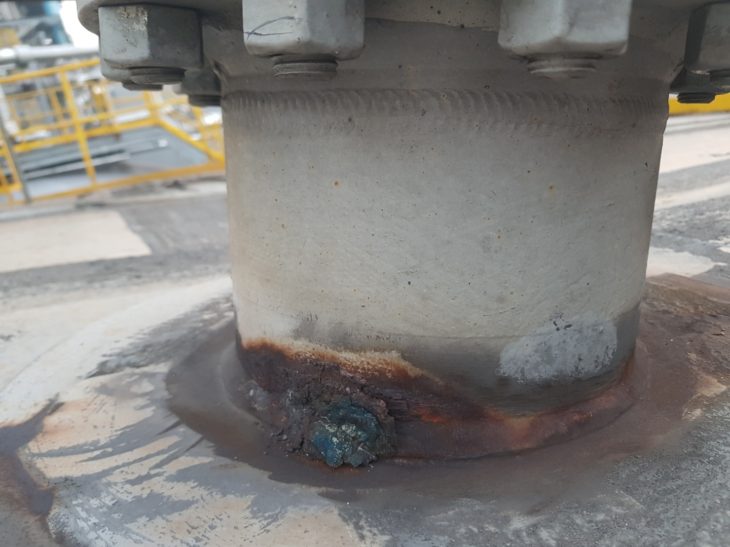South Korea
Pipe Details
- Leaking ammonia tank
- Cracks from 1 mm to 5 mm (0.04 – 0.2 inch) on multiple girth welds
- 80°C (176°F) Operating Temperature
Summary
An inspection at a tank farm in Korea revealed that the roof of a tank holding ammonia was unsafe. Multiple cracks ranging in size from 1 mm to 5 mm (0.04 – 0.2 inch) in length had appeared along a girth weld, and the tank had developed leaks. It was no longer safe to use the tank, so the owner began to look for a way to address the situation to avoid a potential environmental hazard. The first attempt to address the problem was to bring in qualified welders to inspect the welds and to repair any that were defective. This work required processing to be shut down to eliminate work hazards to the welders, who performed the inspections and repairs necessary to restore the tank to safe service. Unfortunately, this solution was very short-lived. Before long, cracks developed again, and the owner was back in the same situation looking, for a way to deal with critical integrity issues.
It was apparent that welding would not be able to fix the problem and that an alternative solution was needed. If possible, the owner wanted a repair that would not require operations to shut down. This led to the selection of CSNRI Contour, an engineered composite repair (ECR) system with a track record for addressing structural reinforcement problems in refineries and on tank farms. Contour has reliably delivered long-lasting repair across a broad temperature range, -55°C (-67°F) to 162°C (324°F), making it idea for this application, where temperatures could reach 80°C (176°F).
The Contour ECR system features bi-axial or quad-axial stitched fiberglass cloth applied in a wet-lay system that is certified by DNV GL in accordance with the ASME PCC-2 and ISO 24817 standards. In most cases, Contour can be installed without disrupting operations, introducing no environmental hazards, and requiring only hand tools for installation.

A team of 2 CSNRI trained and certified installers from Dong-buk E&C approached this repair with caution, recognizing that the tank content was very hazardous and explosive. Because some points were leaking ammonia gas, the repair team used nitrogen dioxide to prevent an explosion while the weld joints were blast treated to ready the surface for the composite repair. When the preparation was completed, technicians filled each damaged area with proprietary filler before overlaying it with fiberglass. The complete repair required 2 layers of Contour.
All the repairs were completed without incident over the course of 20 days, delivering a solution that was fast and easy to install and will last for decades. No welding was required, and plant operations were able to continue uninterrupted while the repair was being made.

